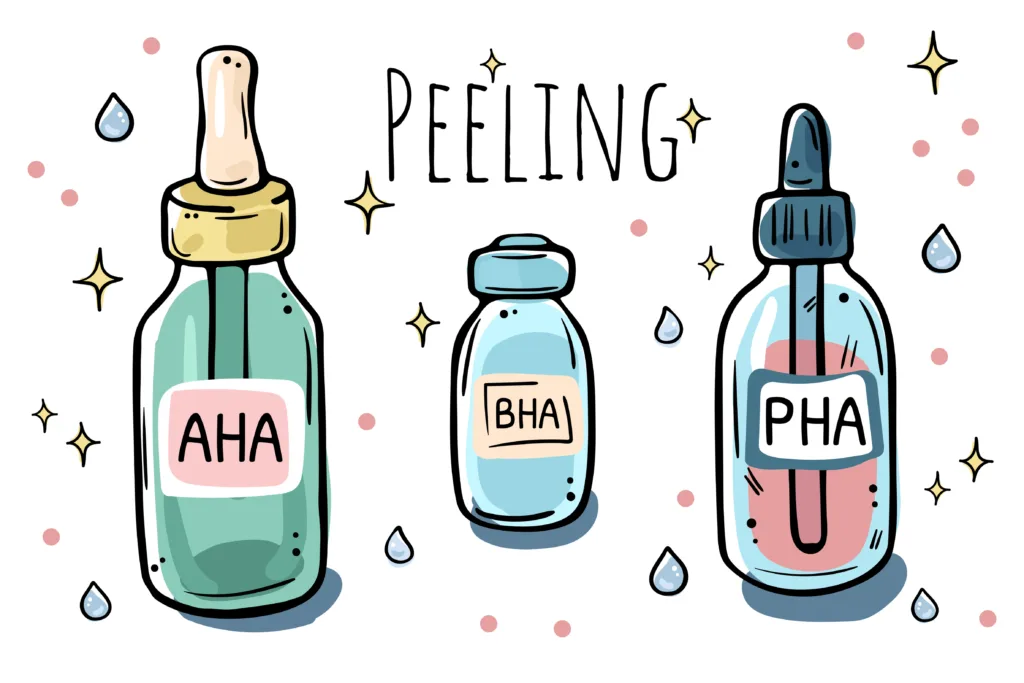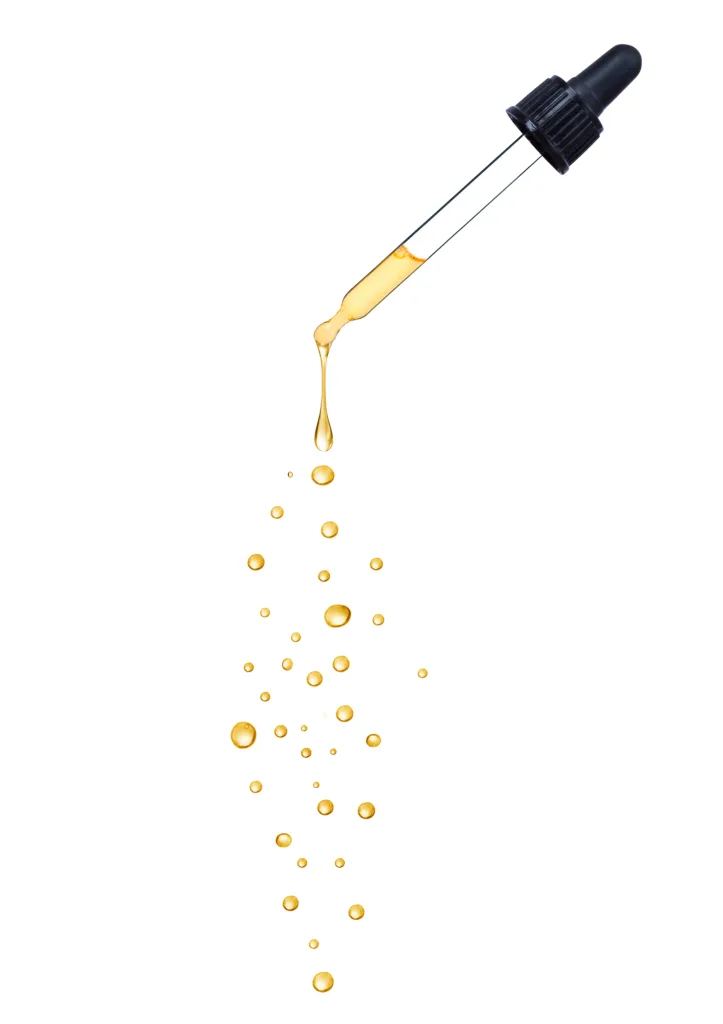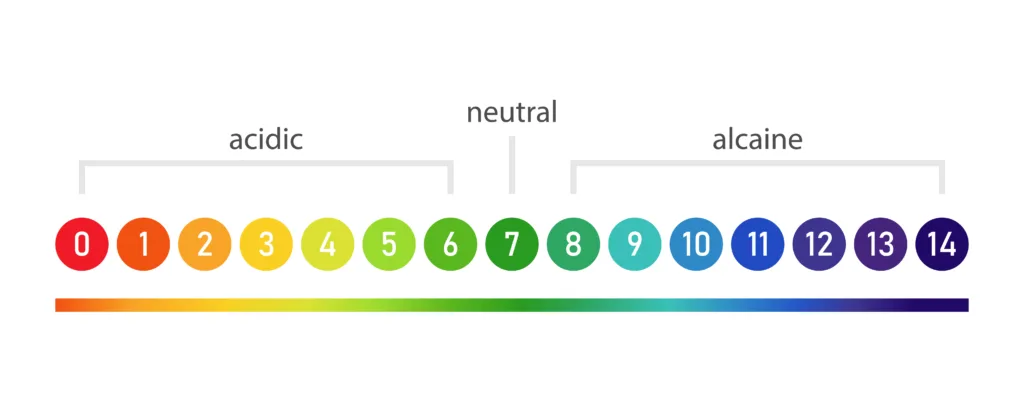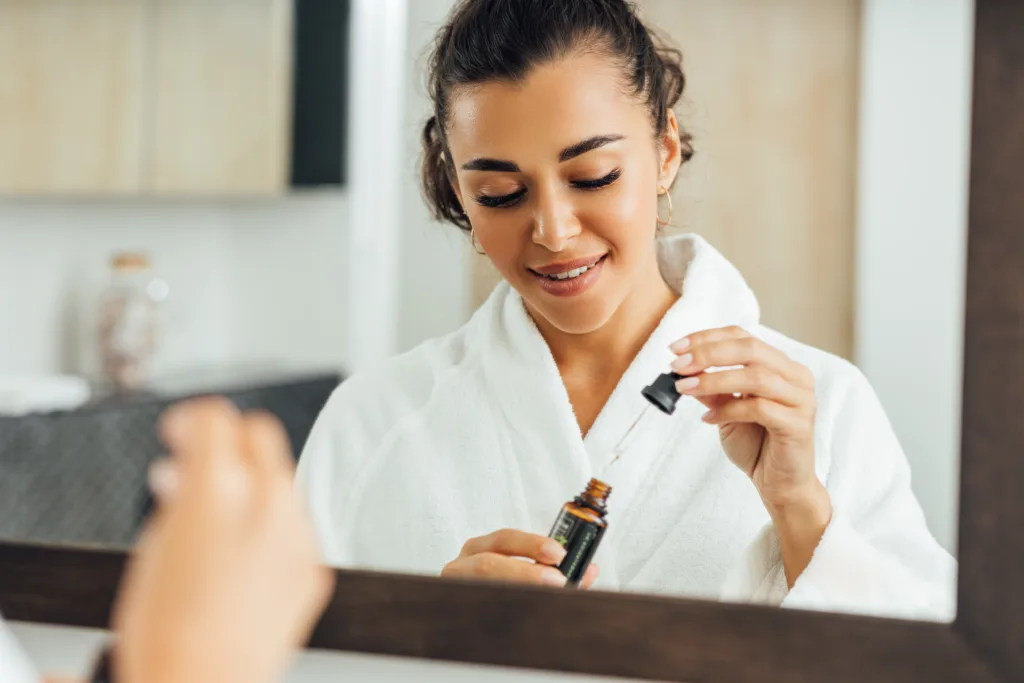
Have you ever wondered why some people seem to have that effortless, glowing complexion? The secret might just lie in their exfoliation routine.
But there are a lot of products out there that exfoliate. From scrubs and electronic devices to acids and enzymes, they’re all designed to exfoliate.
Which one to choose, why and how to use it are some of the questions we’ll answer in this article.
Table of Contents
What is Exfoliation?
We start off with the basic question of what is an exfoliant.
An exfoliant is a product that removes the dead skin cells from the outer layer of the skin. This can be done physically or chemically, as we will see shortly.
Although exfoliants are great at removing dead skin cells, we shouldn’t think this layer is useless. In fact, the stratum corneum is packed with antioxidants that defend our skin from environmental stressors.
If stratum corneum plays such an important role, do we need to remove it?
Is Exfoliation Necessary?
The short answer is: No.
Why? Because our skin has the natural ability to shed away and replace skin cells by itself. Self-exfoliation in healthy skin means the keratinised cells (dead cells) at the top of the skin are replaced with fresh ones at an equal rate.
Enzymes are responsible for dissolving the protein bridge between the cells, enabling the keratinised cells to fall away.
However, in order for enzymes to do their job, the environment (your skin) needs to be hydrated. If the environment is dry, enzymes cannot dissolve those bridges.
So unless you have a condition, using an exfoliant in your routine is a matter of preference rather than necessity.
But for many, it is not whether to exfoliate or not, but which type to use and how.
Physical or Chemical Exfoliation?
Simply put, chemical peels use acids or enzymes to dissolve dead skin cells, while physical exfoliants mechanically remove them. So the difference between them is that one dissolves while the other scrubs away dead skin cells.
Types of Physical Exfoliants
Physical exfoliants come in various forms, with each offering a unique sensory experience:
- Scrubs: These grainy products contain small particles like sugar, salt, or ground nuts to buff away dead skin.
- Brushes: From soft bristle brushes to electronic devices, these tools provide a thorough cleanse and exfoliation.
- Buffing Pads: These are textured pads or cloths that offer a gentle yet effective way to exfoliate.
In addition to these at-home options, we have professional treatments like microdermabrasion and dermaplaning that fall under the physical exfoliation category. Microdermabrasion uses tiny crystals to resurface the skin, while dermaplaning involves using a surgical scalpel to gently scrape away dead skin and peach fuzz.
These procedures are usually performed by a dermatologist or esthetician.
The Benefits of Physical Exfoliants
One of the main advantages of physical exfoliation is the immediate gratification it provides. You can instantly feel and see the results as dead skin is sloughed away, leaving your skin smoother and brighter. This method is particularly effective for removing surface-level impurities and can help improve skin texture quickly.
Chemical Exfoliation
Chemical exfoliation, on the other hand, uses specific acids or enzymes to dissolve the bonds between dead skin cells, allowing them to be easily swept away.
This method offers more consistent results over time, but with so many chemical exfoliants in the market, choosing the right one can be tricky.
Types of Chemical Exfoliants

We have two types of chemical exfoliants: acids and enzymatic. And we start with the acid exfoliators as they are the more common chemical exfoliators.
Acid Exfoliators
When we talk about acids, we talk about exfoliation (with the exception of hyaluronic and azelaic acid, which are different kinds of acids).
Within the acid exfoliators, we have three groups of acids, and we will see what they do and how they do it. They are: AHAs (alpha hydroxy acids), BHA (beta hydroxy acid) and PHA (polyhydroxy acids).
Alpha Hydroxy Acids (AHAs)
These water-soluble acids and work on the skin’s surface to improve texture and tone. They’re excellent for addressing fine lines, uneven pigmentation, and dullness.
1. Glycolic Acid – Comes from sugarcane and has the smallest molecule out of all AHAs. This gives glycolic acid the ability to penetrate deeply and stimulate fibroblast cells (these cells are found in the connective tissue and produce collagen and elastin). Simultaneously, it also exfoliates the skin, increasing cell turnover and building up the support structure in the extracellular matrix (ECM).
2. Lactic Acid – As the name suggests, this acid is derived from milk (nowadays is made synthetically). Its molecules are larger than other AHAs, which means that it penetrates slowly and is gentler to the skin. In addition, lactic acid is part of your skin’s NMF (natural moisturising factor) and has humectant properties (it attracts moisture).
3. Mandelic Acid – With the largest AHA molecule, this is the gentlest AHA. While not as effective as glycolic acid, mandelic acid is a better choice if you have sensitive skin.
4. Tartaric Acid – Has antioxidant properties which means it helps protect the skin from damage caused by free radicals. Though more research is needed to understand its benefits for the skin. It also has an important role in maintaining the pH range in the formula, stabilising other acids’ pH.
5. Malic Acid – Is derived from unripe fruits and it’s used to maintain the pH balance in cosmetic products. At lower concentrations and an acidic pH, malic acid boosts the efficacy of other AHAs like glycolic and lactic acid.
6. Citric Acid – It’s a good source of antioxidants and is extracted from citrus fruits such as lemons, limes and oranges. Due to its large molecular size, it has a reduced potency, which makes it gentler than other AHAs. In addition, citric acid has astringent properties, which help dry out excess oil.
Beta Hydroxy Acid (BHA)
You may have noticed the word acid and not acids in the title. That’s because there is only one beta hydroxy acid: Salicylic Acid.
If you suffered from acne as a teenager the dermatologist likely recommended salicylic acid as a treatment. Its antibacterial, anti-inflammatory and oil-soluble nature penetrates the pores and dissolves the sebum and dirt, unclogging them.
The main difference between AHAs and BHA is that AHAs are water-soluble whereas BHA is oil-soluble. That means AHAs work on the skin surface while BHA works on the skin surface as well as within the pores.
Thanks to its ability to penetrate deeper, salicylic acid is also effective in treating keratosis pilaris (also known as strawberry skin or chicken skin).
Polyhydroxy Acids (PHAs)

If your skin is sensitive and you want the results of an acid, PHA is what you’re looking for.
PHAs are considered the next generation of AHAs. It’s no secret that AHAs can cause irritation, which, if you have sensitive skin, can be too much.
This is where PHAs shine: they are functionally similar to AHAs but have a larger molecular structure, resulting in a slower and more gradual penetration. A slower and gradual penetration means less side effects and irritation.
As we will see, a unique characteristic of PHAs is their humectant properties.
1. Lactobionic Acids – Are obtained from lactose and have excellent antioxidant properties. Apart from its ability to protect the skin from free radical damage, lactobionic acids are also humectants (they bind water to the skin). They are used to reverse signs of ageing and stop collagen degradation.
2. Gluconolactone Acid – Similarly to lactobionic acid, gluconolactone acid has the unique property of being an antioxidant as well as a humectant. Additionally, gluconolactone inhibits elastase (an enzyme that breaks down elastin), maintaining the elasticity of the skin. While gluconolactone acid may not be a star ingredient in skincare products, it is one of the most common PHAs used.
3. Maltobionic Acid – This is another great support ingredient. The larger molecule size of maltobionic acid helps it bind more effectively to water molecules, making it more humectant than other acids, which is a good choice if your skin is dry. Besides being a superior humectant, formulations that contain maltobionic acid help prevent collagen degradation, protect from hyperpigmentation and reduce the appearance of fine lines and wrinkles.
Enzymatic Exfoliators
These exfoliators fall in the chemical category because, similar to acids, enzymes dissolve dead skin cells.
Enzymes are a milder alternative to exfoliating acids, however they are sensitive, and products containing enzymes must be stored carefully in a cool dark place.
The most common enzymes used in exfoliators are:
1. Bromelain: This natural exfoliant is found in pineapples and has fantastic skin benefits: antibacterial, anti-inflammatory, antioxidant and of course, exfoliant. It’s mainly used in anti-ageing products as it boosts collagen production, a key component of skin elasticity and firmness.
2. Papain: Comes from papaya fruit and acts as a natural exfoliant. It’s used in acne treatment thanks to its anti-inflammatory properties and is rich in vitamin A.
3. Ficin: Is a plant-based enzyme derived from fig tree latex (the milky sap from fig tree). It has excellent antioxidant properties, an impressive 78.7%-72.4% of vitamin C’s activity (according to this research). It also has anti-inflammatory properties by inhibiting the nitric oxide (NO), a signalling molecule responsible for inflammation. Additionally, a recent study has shown that ficin also has a whitening effect.
4. Keratinase: This enzyme is derived from certain microorganisms (like fungi or bacteria) when the protein keratin is introduced in the microenvironment. In the context of skin, keratin makes up the epidermis (the outer layer of the skin). When applied topically, keratinase gently breaks down the bonds between dead skin cells, leading to smoother, brighter skin and improving the penetration of other skincare products.
In case you’re wondering why the microorganisms aren’t directly used on the skin to break down keratin, it’s because introducing living microorganisms to the skin can lead to uncontrolled growth and potential infections alongside other safety concerns such as allergic reactions and product stability.
Benefits of Chemical Exfoliants
Because acids work through chemical processes and not mechanical, they yield better results. Apart from removing dead skin cells, chemical exfoliants also have the ability to treat skin conditions like acne, wrinkles, rough skin, etc.
Another advantage of chemical exfoliants is that, unlike their mechanical counterparts, they can be used on acne-prone or sensitive skin.
Let’s Talk Concentration

While AHAs, BHAs, and PHAs share similar functions in chemically removing dead skin cells, their molecular structures and properties lead to differences in penetration depth and effectiveness.
For acids to work, they must be acidic (very surprising, we know). That’s why these acids are effective at different concentrations and pH levels.
– AHAs (water soluble) – Are used in concentrations of less than 10% with a pH between 3.5 and 5.
– BHA (oil soluble) – Is used in concentrations of 1.5% and 2% with a pH less than 5, usually between 3 and 4.
– PHAs (water soluble) – Are used in concentrations of up to 15% with a pH less than 5.
What about acids with higher concentrations? Exfoliating with products that have high concentrations of acid can easily lead to over-exfoliation and hurt the skin. You should only use them if you are an experienced user of acid exfoliators or have consulted a dermatologist.
If you use a well-formulated exfoliant with the concentration mentioned above and don’t feel it working (tingling sensation), that doesn’t mean it’s not working. In fact, you shouldn’t feel a thing!
How to Exfoliate
To achieve the best results, AHAs and PHAs should be used as part of your night routine. If you choose to exfoliate in the morning, always follow up with broad-spectrum sunscreen to protect your more sun-sensitive skin.
1. Chemical Exfoliants:
– Start off by cleansing and patting dry your skin with a clean towel.
– Apply the exfoliant on your face (you can use a cotton pad) and, use small circular motions and avoid the eye area.
– Allow the exfoliant to be fully absorbed by the skin (this usually takes around 2 minutes), followed by your regular skincare routine (usually moisturising).
– Some products require you to remove the exfoliator from the skin. Follow the instructions on the packaging.
2. Physical Exfoliants (scrubs):
– After cleansing, put a small amount of your scrub in your hand and gently massage it onto your skin in a circular motion for about 30 seconds, avoiding the eye area.
– Rinse off with warm water and gently pat your skin with a clean towel, followed by your regular routine.
Which Exfoliant is Right for You?

1. Alpha Hydroxy Acids (AHA): Best for targeting signs of ageing.
– Glycolic Acid: Stimulates collagen production. Effective for reducing fine lines, wrinkles, and hyperpigmentation.
– Lactic Acid: Has hydrating properties. If your main concern is dehydrated or dry skin, this is for you.
– Mandelic Acid: Good for sensitive and oily skin.
– Tartaric Acid and Malic Acid: They have great antioxidant properties however they are used as support ingredients.
– Citric Acid: Particularly beneficial if you have oily skin.
2. Beta Hydroxy Acid (BHA): Best suited for oilier skin.
– Salicylic Acid: A gentle acid that is best for treating breakouts and spots.
3. Polyhydroxy Acids (PHAs): Similar to AHAs, they target signs of ageing but differentiate themselves by being gentle on sensitive skin.
– Lactobionic Acid: Is a natural humectant. If your skin is dehydrated, this is for you.
– Gluconolactone Acid: Look for gluconolactone acid if your skin is sensitive.
– Maltobionic Acid: Is a superior humectant but is used as a support ingredient.
4. Enzymatic Exfoliators: Milder than AHA’s and BHA acid exfoliators, they are great if your skin is sensitive.
Before You Leave
Exfoliation is a necessary step in the skincare routine for some, and overdoing it can lead to more harm than good. That’s why we have a very useful article about over-exfoliation titled: 9 Telltale Signs You’re Over-Exfoliating Your Skin | And How To Recover From It.